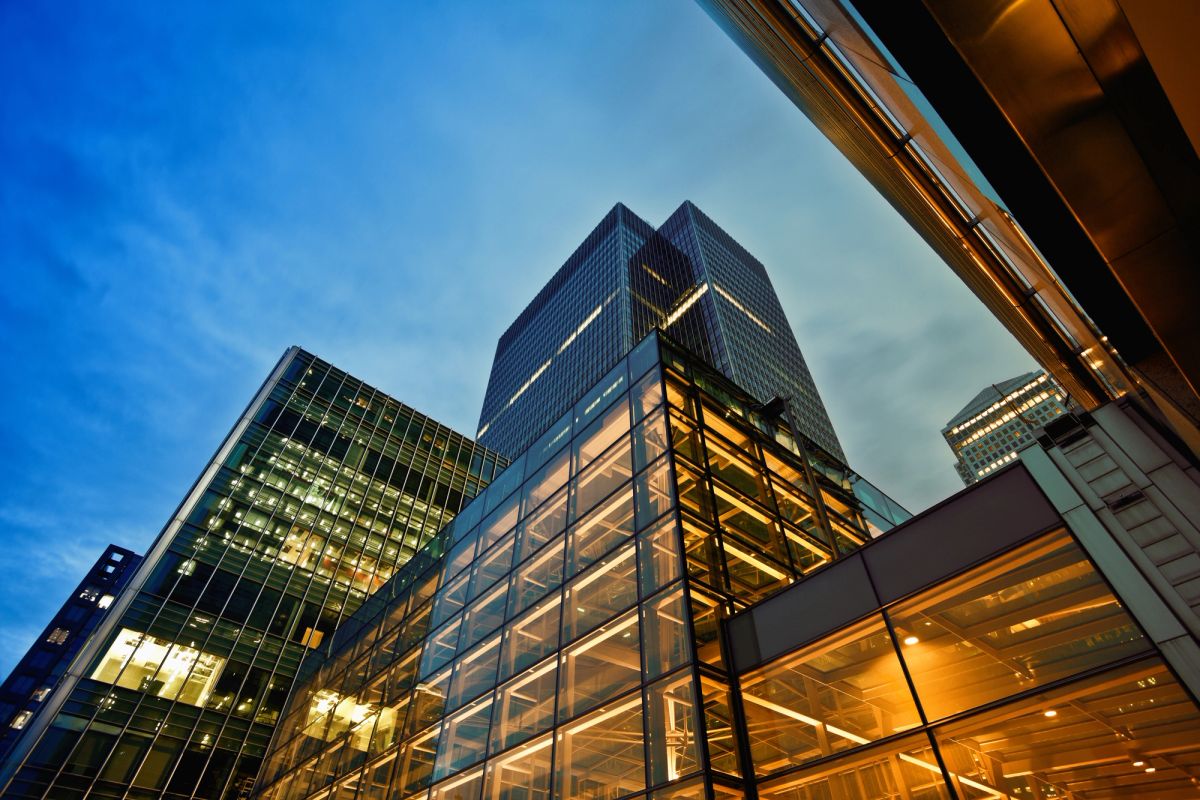How to Choose the Right Commercial LED Lighting for Your Business
Commercial LED lighting has become an essential part of modern life. In all parts of commercial real estate , from offices to retail stores, restaurants to factories, businesses need light to function properly. But how much light should you use in your office space? And what kind of lights will best suit your needs?
Commercial lighting is significantly different from industrial lighting. Fixtures for industrial lighting are of higher output, larger size, and more durable quality. Moreover, industrial lighting is applied to warehouses, garages, factories, and other facilities with an increased risk of injury and accidents. Poor lighting impacts work performance, causing fatigue, errors, and in some cases, injuries.
The safety and productivity of workers are highly related to industrial lighting, which is why businesses place such significant importance on lighting. Lighting represents as much as 37% of a warehouse or light manufacturing facility's electrical consumption. Because factories and warehouses cover such large areas, the cost of lighting a manufacturing or storage facility around the clock can be immense.
If your industrial facility or warehouse currently uses incandescent or fluorescent light bulbs, it could reduce electrical consumption by up to as much as 75% per month and save thousands of pounds on electricity bills by switching to Commercial LED lighting.
Over the past decade, LED lighting has become popular among leading manufacturers worldwide. Ford Motor Co. installed 25,000 LED light fixtures at its manufacturing facilities worldwide, potentially saving energy costs $7 million annually.
What are LED lights?
LED stands for light emitting diode. An electrical current passes through a microchip, which illuminates the tiny light sources we call LEDs, resulting in visible light. Unlike fluorescent lights, LED lights convert 95% of their energy into light, and only 5% is wasted as heat, all while using far less power to provide strong and consistent output at a lower wattage.
Understand the Benefits of Commercial LED Lighting
There are many benefits to using commercial LED lighting instead of traditional lighting options. These benefits include energy savings, improved worker productivity, and reduced maintenance costs. In addition, commercial LED lighting offers a number of other advantages, such as increased safety, better visibility, and more comfortable indoor environments.
Factories and warehouses have specific lighting needs. LED lighting has unique financial and environmental benefits that bring tremendous value to warehouses and manufacturers, and can help businesses to achieve net zero buildings .
Save tens of thousands on electricity
Lighting is a significant source of electrical consumption for factories and warehouses due to their extensive square footage, often consuming larger amounts of electricity for lighting and heating than other buildings. LED lighting is remarkably efficient, using 75% less electricity than equivalent incandescent lighting. Switching to LED bulbs can result in a considerable reduction in your building's lighting-related electricity costs.
Reduce your building's carbon dioxide emissions
Incandescent and fluorescent lighting aren't just costly - it's wasteful. Even energy-saving CFLs, which are marketed as a more environmentally-friendly lighting choice, contain chemicals that significantly reduce their recyclability. LED lighting not only uses very little electricity and thus produces less carbon dioxide, the materials, and components used in LED lighting are non-toxic and easy to recycle.
Lower your building's maintenance requirements
Switching to commercial LED lighting doesn't just reduce your building's electricity usage. It also reduces its maintenance needs by purchasing bulbs that last for longer and need to be replaced less frequently. LED lights have, on average, a function lifespan of between 30 to 50 times longer than incandescent light bulbs and three to five as long as energy-efficient fluorescent lights.
Disadvantages of LED lights
High up-front costs
Turning an LED into a light bulb requires the integration of sophisticated technology. Components on the circuit board are so delicate that they must be assembled by hand.
Temperature
LED performance largely depends on the ambient temperature of the operating space. The LED package may overheat if the environment has high ambient temperatures, eventually leading to device failure.
Light quality
Most cool-white LEDs have spectra that differ significantly from a black body radiator, spiking at 540 nm and dipping at 500nm. This can result in the colour of objects being perceived differently under cool-white LED illumination.
Different types of LED lights
With a wide selection of industrial LED light fixtures available, it is essential to understand the difference between each feature, as many are designed for specific types of applications.
High Bay Fixtures
These are installed in industrial spaces with a ceiling above 20ft from the ground. These lights have a high lumen output to ensure that the area is well lit since the fixtures are high above the ground.
Low Bay Fixtures
These are employed in facilities with ceilings lower than 20ft. Unlike high bay lights, these fixtures have fewer lumens since they don't have to perform as hard.
Recessed Troffer Lights
These can be pendant mounted, surface mounted, or chain-hung in industrial facilities.
Linear Strip Lights
These can be used in commercial or industrial spaces to give a smaller footprint and cleaner look.
Task Light and Lamps
These are portable lights that make it easy to concentrate on tasks in which precision is needed. These fixtures are adjustable, flexible and offer highly concentrated focused light.
Area Light Fixtures
These are predominantly used to light up the parking lots and walkways of warehouses, factories, etc.
Floodlight Fixtures
These are outdoor light fixtures ideal for security and landscape lighting.
LED Wall Packs
These are also a fantastic option for security lighting in industrial spaces. Specifically, they are used in outdoor areas where controlling light spills is essential.
Choosing the right light fixture: Retrofit LEDs vs LED Light Fixtures?
When choosing between the available options, it's essential to understand the difference between the different lighting solutions. There are two main categories: Retrofit LEDs and LED Light Fixtures.
Retrofit LEDs utilize existing lighting fixtures through simple screw-in options or retrofit kits that fit into existing lighting equipment. In contrast, LED fixtures are new lighting fixtures designed and built using LED technology and can replace any existing lighting solutions.
Of the two, retrofitting is the least expensive way to upgrade your property's lighting, and the savings made on reducing energy use will quickly recoup costs, while LED light fixtures are available with much higher lumen outputs than retrofit options. Both options require very little maintenance. Although, both require regular dusting and inspection to help LEDs last longer and prevent component failure.
Make the switch to LED lighting with CoolPlanet
LED lighting has been around since the 1950s but its popularity has only recently started to grow. It’s now one of the most popular forms of lighting to enable sustainable business .
Would you like to spend less on electricity?
There are many ways to improve your energy management practices so you can lower your electricity bills. Investing in good Building Energy Management Systems like CoolPlanetOS Commercial battery storage , investing in an efficient boiler (this could include optimising your existing boiler), or upgrading to a new industrial heat pump are all examples of other ways to decrease energy spend.
Lighting is a substantial cost for many warehouses and factories and can be reduced by investing in LED lighting. The energy efficiency and long life of LEDs make them an attractive alternative to traditional light bulbs.
There are several reasons why LED lighting is so efficient. First, it uses less electricity than other forms of lighting. Second, it lasts longer than incandescent bulbs. Third, it emits very little heat, making it ideal for spaces where heat is a problem. And fourth, it produces more light per watt than any other form of lighting.
Switching to energy-efficient LED light bulbs can reduce your building's electricity, decrease carbon emissions and improve the health and productivity of your workforce.
CoolPlanet can help you retrofit for LED or replace with LED light fixtures. Talk to us today.





